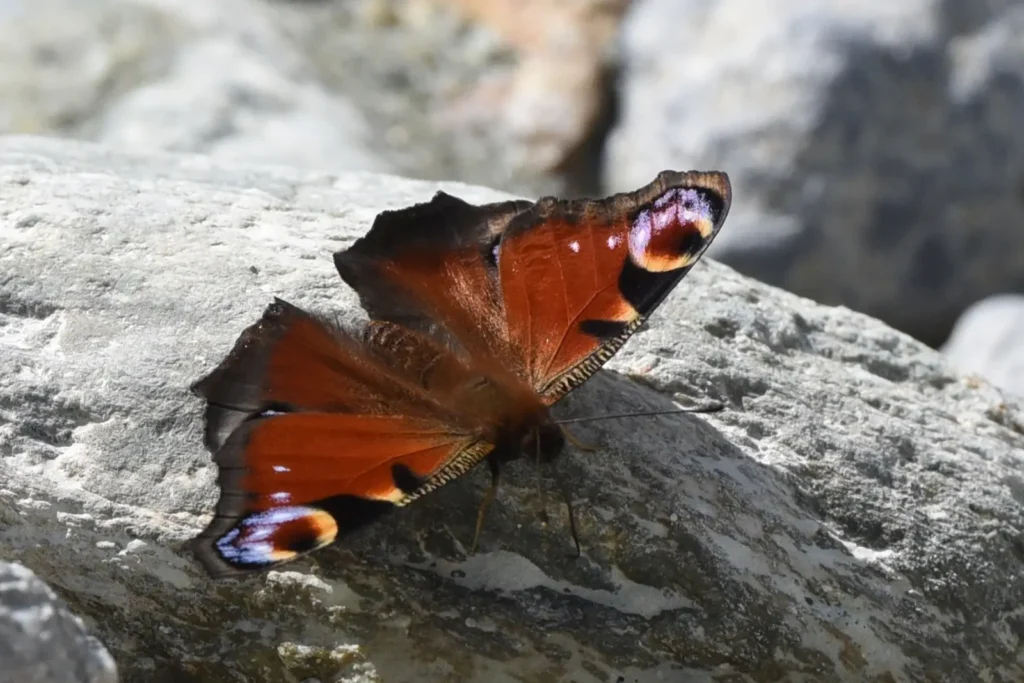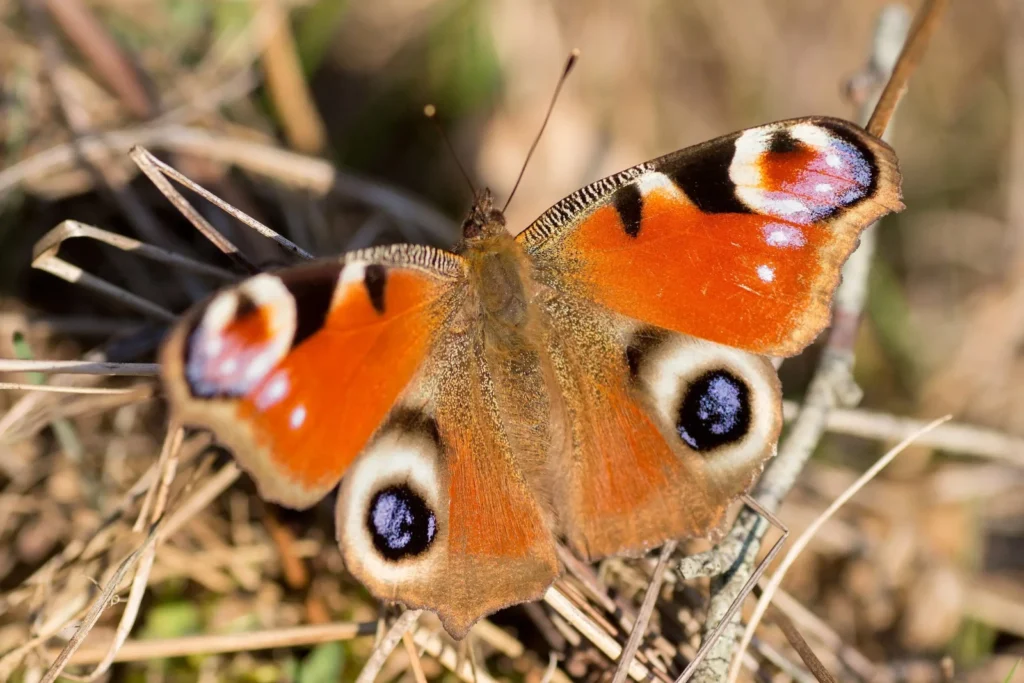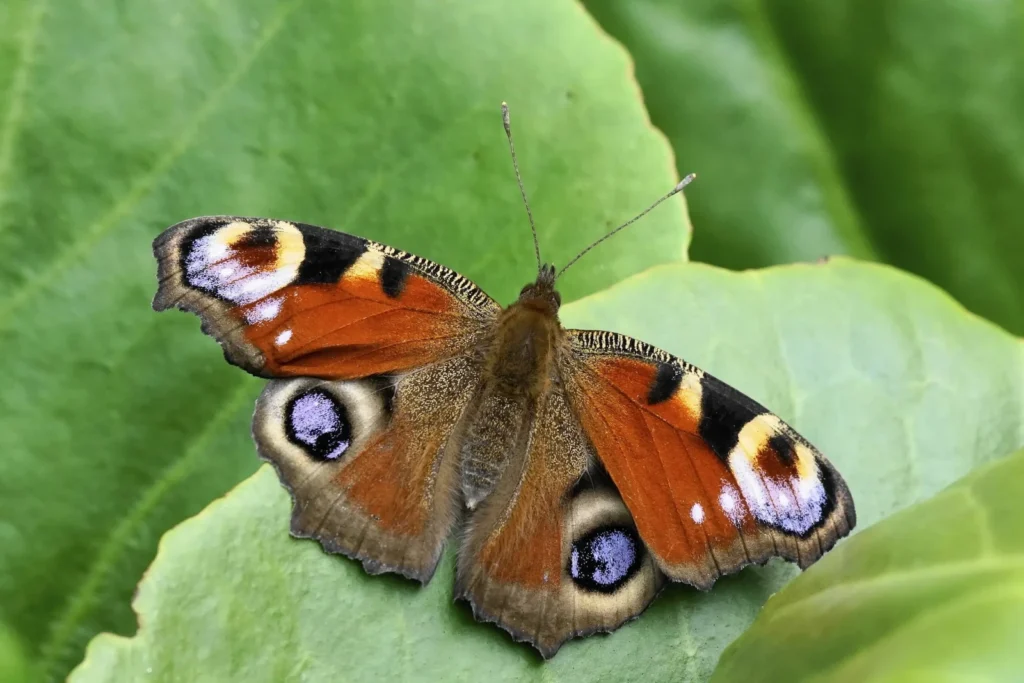Solstice Peacock's Eye (Aglais io)- one of the the most beautiful and recognizable butterflies in Europe and Asia. Its large red wings, decorated with bright "eyes", make it a real decoration of forests, fields and gardens.
Its coloring is not only attracts attention, but it also helps protect yourself from predators - large spots resemble the eyes of an owl or predator, which scares off potential attackers.
Solstice Peacock's eye is there an important pollinatoralthough it does not harm agriculture, its caterpillar feeds on nettle leaves.
In this article, we will look at structure, habitat, life cycle, food habits, natural enemies, defense methods and interesting facts about this beautiful butterfly.

Scientific classification
🔬 Classification of solstice Peacock's eye:
✔ The Kingdom: Animals (Animalia)
✔ Type: Arthropods (Arthropoda)
✔ Class: Insects (Insecta)
✔ Row: Lepidoptera (Lepidoptera)
✔ Family: Solntseviki (Nymphalidae)
✔ Gender: Aglais
✔ View: Solstice Peacock's Eye (Aglais io)
📌 Interesting!
Title Aglais derived from the Greek goddess of joy, and io "on behalf of the nymph Io, one of Zeus' lovers."
Appearance and features of the structure
Solstice Peacock's Eye – medium-sized butterfly, which is easily recognized by its bright colors.
, Main Features:
✔ Wingspan: 50-65 mm
✔ Color scheme: bright red with "eyes" on each wing
✔ Wing shape: rounded shape
✔ Oko: large, complex projects
✔ Tentacle: club-shaped
✔ Body: covered with thick microscopic hairs
🔹 Key features of painting:
✅ The main color of the wings – dark red
✅ On the front and rear fenders are located four big " eyes” blue, black and yellow colors
✅ Underside of the wings – dark brown, which helps with disguise
📌 Interesting!
When a butterfly folds its wings, it it looks like a dry leafwhich helps it avoid predators.
Habitat and distribution
🌍 Where does the Peacock's Eye solstice live?
This view very common it is also found in many regions.
✅ Distribution regions:
• Europe - from Britain to the Urals
• Asia - China, Mongolia, Japan
• Central Asia - Kazakhstan, Turkmenistan
• Caucasus and Middle East
🔹 Typical habitats:
✅ Forest clearings and forest edges
✅ Fields, meadows, steppes
✅ Parks, gardens, urban green areas
Альп Alpine meadows (up to 2500 m above sea level)
📌 Interesting!
Solstice Peacock's eye prefers open sunny places, so it is rarely found in dense forests.

Life cycle and reproduction
This view can give 1-2 generations per year, depending on the climate.
Стадії стадии развития:
✅ Egg - 7-14 days
✅ Caterpillar - 3-4 weeks
✅ Pupa - 2-3 weeks
✅ Imago (adult butterfly) - lives 1-2 months
🔹 How does the Peacock's Eye solstice reproduce?
✔ Female lays eggs up to 500 eggs on nettle leaves
✔ After 1-2 weeks, black caterpillars with white dots hatch
✔ The caterpillar lives in groups and passes 5 lines
✔ After 3-4 weeks they pupate
✔ At the end of summer, the pupae come out adult butterflies, which hibernate in storage facilities
📌 Interesting!
Solstice Peacock's Eye it overwinters as an adult butterfly "he hides in tree crevices, caves, or attics.
Food habits and role in nature
What does Peacock's Eye Solstice eat?
✅ Caterpillar:
* Nettle leaves
* Hop leaves
* Raspberry leaves
✅ Imago (adult butterflies):
* Flower nectar (thistle, clover, dandelion)
* Tree sap
* Overripe fruit
🔹 What benefits does this butterfly bring?
✔ Pollinates flowers, promoting plant reproduction
✔ It serves as food for birds and insectivorous animals
📌 Interesting!
This butterfly is especially fond of nectar thistle, which is why it is often seen in forest clearings.

Natural enemies and threats
🔹 Who hunts Peacock's Eye Solstice?
✅ Birds-tits, Thrushes
Parasitic wasps-lay their eggs in the caterpillar
Па Spiders-catch in the web
✅ Small mammals-mice, bats
🔹 Main threats:
⚠ Destruction of the natural environment
⚠ Use of pesticides
⚠ Climate change
📌 Interesting!
Thanks to the disguise and "eyes" on the wings, this species suffers less from predatorsthan other butterflies.
Interesting facts about the Peacock's Eye Solstice
✔ It overwinters as an adult butterfly
✔ It can mimic a dry leaffolding the wings
✔ Spots on the wings scare off birds
✔ It flies even in cool weather
Conclusion
Solstice Peacock's Eye (Aglais io) – a great example of natural camouflage and bright protection from predators. It plays an important role in pollinating plants and maintaining biodiversity.
📢 This butterfly is a real decoration of nature, which is worth taking care of!